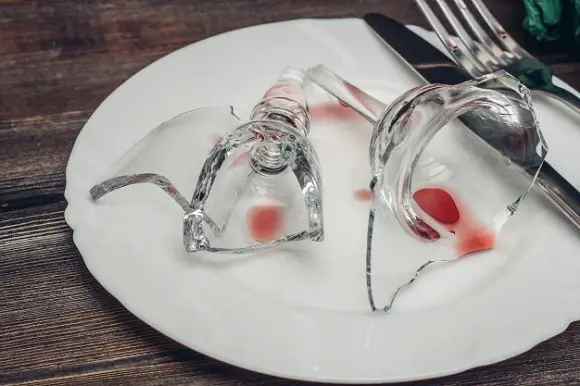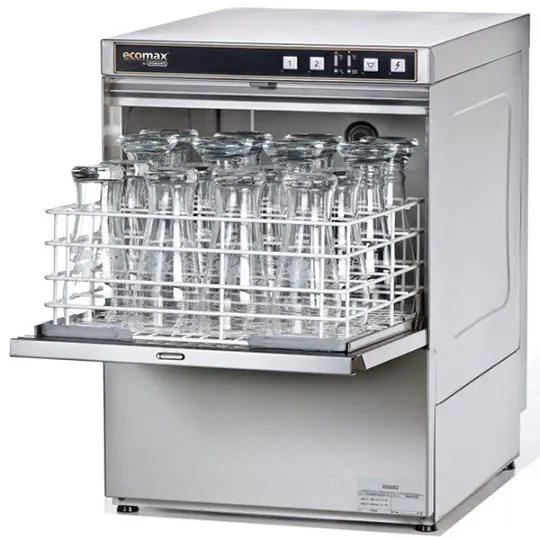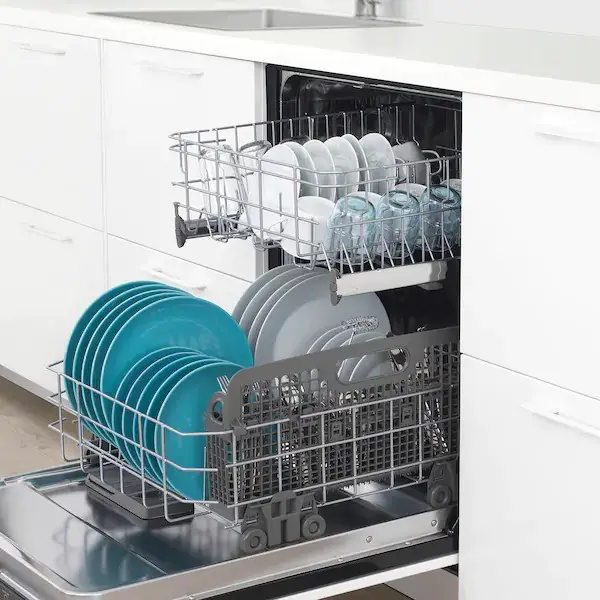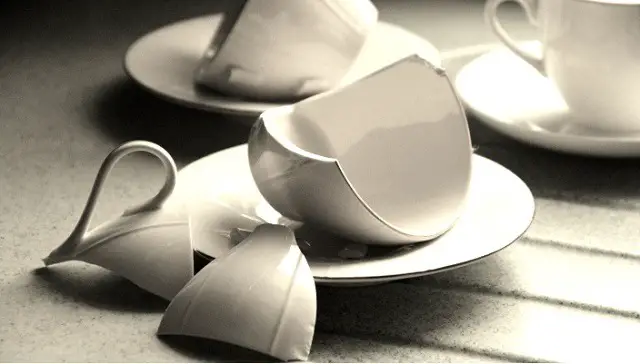When you are working in your kitchen, whether at a professional or domestic level, you’ll find risks at every turn.
This makes it one of the most hazardous spaces in your home.
The standard kitchen has heat sources, knives, utensils, cleaning products, water and other liquids that may spill and other potentially hazardous equipment and items.
[toc]
Therefore, familiarizing yourself around the kitchen can help in reducing the threat of injury and ensure others stay safe.
One of the most important areas in your home is the kitchen since you spend a substantial amount of time there, second only to your living area or your bedroom.
It’s difficult to agree on one ideal kitchen as everybody appears to have their own fixed notion of a perfect kitchen.
The state and design of your kitchen will play an important role in establishing your home’s value. If your home’s resale value isn’t your main concern, then you should think about your safety, comfort and all your priceless utensils and appliances in the kitchen.
Most of all, the right kitchen design will make every trip to your kitchen safer and quicker.
Glassware needs the right handling and gentle care. Many people like collecting different kinds of glassware to decorate their kitchen and dining area.
However, you have to remember that these need the right care so they not only continue to maintain their appeal for years but also so that that they their use is not cut short through breakages.
Breakages are a kitchen hazard since broken utensils can result to cuts and other injuries. Avoiding and reducing breakages is one way of making your kitchen safer.
The fragility of the item will determine the amount of care it needs. You should wash the glassware gently in the dishwasher or in a plastic bowl so that they don’t lose the shine.
It’s important to use warm water together with baking soda rather than handwashing these items using detergent. In addition, you should wash an item at a time to avoid colliding and breaking.
Why do breakages occur in the kitchen?

Spontaneous breakage of glass is an occurrence associated with windows, glass furniture, glass cookware, and other architectural glass, where the glass shatters with no reason.
Tempered plate glass also called toughened glass is used for car shields, furniture, doors, balconies, skylights and oven glass.
Spontaneous tempered glass breakage is popularly caused by not enough thickness for resisting high wind loads, internal defects like nickel sulfide inclusions, nicked or chipped edges at the time of installation, thermal stresses in the glass and stress as a result of binding in the frame.
Tempered glass will break into lots of tiny pieces, which helps avoid the risk of injury as a result of flying fragments and sharp edges.
Glass pots and pans created with tempered or heat-strengthened glass will suddenly shatter because of thermal stress due to regular use. Fracturing will produce fragments in both kinds of glass.
Tips on how to handle glassware
It is important that you pay attention and care when cleaning up and handling glasses.
Looking after glassware in the right way increases their lifespan. It also makes sure that your drinks are served and presented in the right way.
Glasses that have not been cleaned or dried in the right way retain unwanted toxins and smells that affects your drinks.
In addition, those with watermarks and grease lose their sheen. This is especially essential when serving wine and whiskey where it’s important to access translucency and color.
Thermal shock
This is the unexpected change in a glassware item’s temperature. Because of a glass’s dense nature, the material’s quick expansion and retraction when you expose it to cold or heat will weaken the item’s overall structure.
All glassware features a specific thermal shock resistance level. But frequent exposure to unexpected changes in temperature will result in a breakage of glassware.
The primary reason behind the breakage of glass in dishwashers is thermal shock.
Mechanical shock
This pertains to a physical impact on the glass, often from a piece of tableware, or another glass.
All glasses feature a specific mechanical shock resistance characteristic, but frequent impacts can minimize any glassware item’s strength.
Drying glassware
- After you wash the glasses, leave them in an upside-down position to dry
- Once they dry, you can remove watermarks with a soft dry cloth. This will help retain the glassware’s clarity
- Air-dry the glasses where possible; cloths will spread dirt and grease leaving unwanted toxins and smells
Using a glasswasher

- Make sure you use a glass rack; do not use a plate rack or flatware rack
- Use the low-temperature level on the glasswasher
- Make sure you use a dedicated glassware machine; clean cutlery and crockery separately
Handwashing glassware
- First, wash glasses before using it first
- Make use of water and the right detergent using abrasive shock or sponge
- Don’t soak with other glasses to minimize the likelihood of mechanical shock
- Individually wash each glassware
Storing glassware
You should store all glasses in a manner that will allow air to freely move around (particularly after you wash them). This will help in preventing mold and provide you with cleaner glasses.
When you store glasses on a shelf ensure that you use a shelf liner. This will let the air flow in the glass, which makes the drying process quicker.
For longer glassware storage, glass storage boxes are the best option.
- Make sure hard surfaces have shelf liner – the soft mats will help in protecting glasses from hard surfaces and offer air circulation for air drying.
- For the back of house storage, you can use glass jacks. These compartmentalized boxes help to make sure the glasses don’t come into contact with anything else.
- Make sure the rims of glasses don’t come into contact with other glasses, particularly martini glasses and other wide-rimmed glasses.
Glassware collection
- You can use glass collection baskets if need be, or use nonslip trays to individually place them
- Do not stack glasses unless they have been specifically made for stacking
- Don’t carry many glasses in one hand to avoid them coming into contact with others
Using glassware
- Do not use glasses in a freezer, microwave, or oven, unless they’re specifically made for this purpose
- Don’t put ice or cold water into hot or warm glasses
- When you’re pouring hot drinks, make sure you always use warm water to preheat the glass
- Do not use a glass to scoop ice. You can use either ice tongs or an ice scoop to minimize mechanical shock
Dishwasher

You can use the dishwasher to clean most glassware. When it comes to using dishwashers there are a few do’s and don’ts;
- If you find chips or cracks in glasses, you should throw the chipped or cracked glasses right away
- You should not wash coffee cups in a glasswasher since coffee deposits will stain the water and the glasses. Additionally, this will apply to drinks having cream
- Use non-caustic detergent since caustic types will affect retention, engrave your glasses and provide them with a shadowy color
- Remember to clean new glasses before use
Tracking breakages in your home kitchen
To start with, it is important that you track breakages of all the glassware, saucers, plates, platters and cups, as well as any of the other serving dishes, whether marble, wood, slate or glass.
You should come up with a list, which is easy to follow so that you or any member of your family can note down each time that they witness a breakage, regardless of the cause of the breakage, whether it was during use, washing or defective shelving.
First, you need to talk to the family members about why you will begin this process. It isn’t to accuse or blame anyone; it’s simply to begin establishing how frequently or how many breakages you have in the house.
Everybody has breakages; however, only a few homes track them to check if there’s a pattern surfacing.
To achieve this, you should consider the following:
- The process of cleaning and washing
- Location of most breakages
- Sufficiency of the shelving, racking and storage
- Sufficiency of the working space
- Quality of equipment
- Time of day the breakages take place
- Individuals responsible for the breakages e.g. is it children or adults
Breakage control rules/action plan for your home kitchen
The right glassware care and handling can enhance the product’s longevity and look. You should take care to make sure that every glass item is in great condition and is thoroughly clean.
Here are some tips that can help you in this pursuit.
Basic tips of avoiding needless breakages are;
- Never put cold liquids in warm or hot glasses since this will cause cracks
- Don’t collect glasses in clusters; you can use a glass carrier
- Never place cutlery into glasses
- Don’t stack glasses which haven’t been designed for stacking
You should handle glassware items like glass dinnerware, wine glasses, stemware and pitchers properly especially after washing.
Make sure you use a soft cloth to wipe after keeping them on a drying board for a while. Before you store them, you have to remove the lids to avoid cloudiness that takes place due to dampness.
You should keep glassware items in an area that doesn’t directly receive sunshine or any other type of heat radiation since heat may affect the look.
If you want to pour something hot into a glass, then start with dipping the glass in warm water to prevent stress development due to unexpected temperature change.
During clean up, you can use a wooden or plastic handled brush since these will not cause scratches on the glassware.

